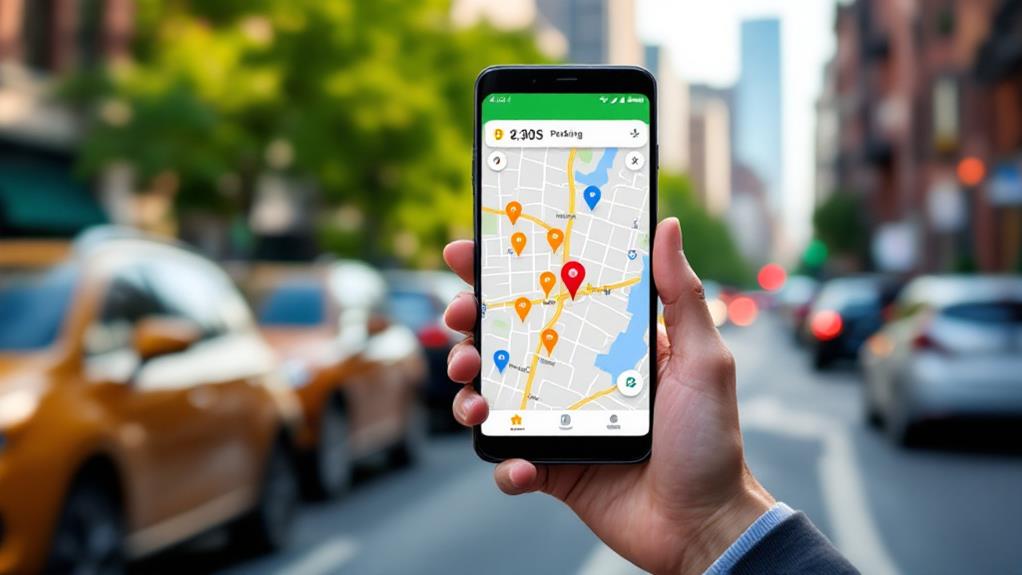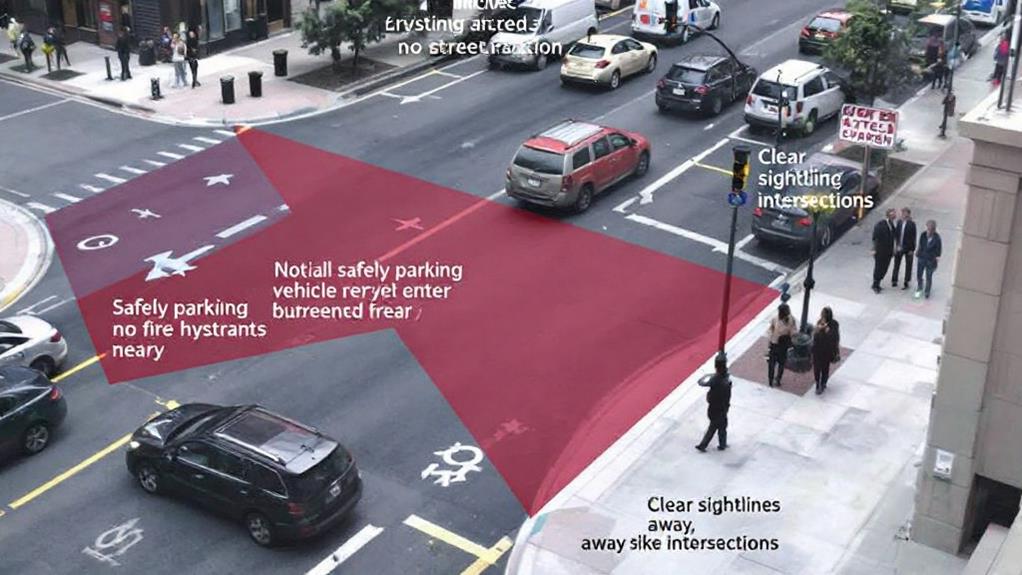Street Parking for Electric Vehicles: Tips for EV Owners
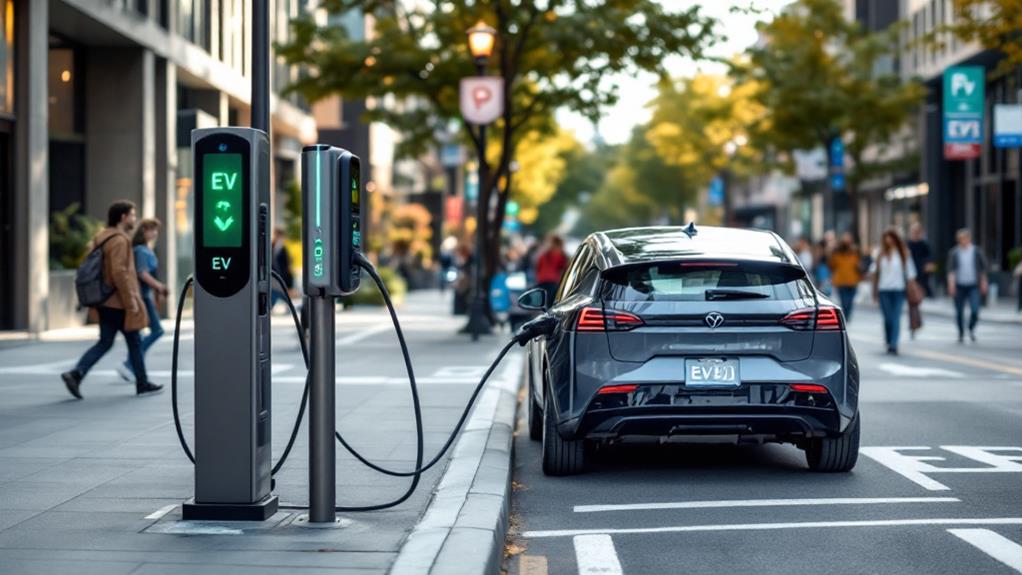
When street parking your electric vehicle, use apps to find nearby public charging stations and be aware of local regulations. Consider portable charging equipment for flexibility. Prioritize safety by choosing well-lit locations and managing cords properly. Familiarize yourself with permit requirements and time limits for EV parking. Practice good etiquette at shared charging spots by only using designated spaces and communicating with other drivers. Optimize charging time and costs by utilizing Level 2 chargers and off-peak rates when possible. You can also advocate for better infrastructure in your community. These tips are just the beginning of perfecting street-side EV charging.
Finding Street-Side Charging Options
The search for street-side charging options has become increasingly important for EV owners without access to home charging. As cities pilot new level 2 charging stations along streets, you'll find more opportunities to investigate your electric vehicle while parked overnight or during the day.
To locate these public charging stations, use mobile apps or websites dedicated to mapping EV charging locations. Many cities are installing street-side chargers that deliver 7.2 kW of power, making them suitable for daily charging needs. These stations often offer competitive rates, around 15 cents per kWh, making them a cost-effective solution for regular use.
When using street-side charging, be mindful of designated parking spots for electric vehicles. Some areas may have time limits or specific rules for using these spaces. As you scrutinize your options, keep in mind that the availability of street-side charging is expanding, but it's still a developing infrastructure. Be prepared to adapt your charging routine and consider alternative public charging stations if street-side options are limited in your area. By staying informed about new installations and being flexible in your approach, you can effectively charge your car while relying on street parking.
Portable Charging Equipment Solutions
While street-side charging stations are becoming more prevalent, EV owners can take charge of their own charging solutions with portable equipment. These portable charging units offer flexibility for those who rely on on-street parking, allowing you to charge your EV in various locations.
You'll find that many portable chargers come with retractable cord systems, which enhance safety by reducing tripping hazards when deployed and easily store away when not in use. If you don't have dedicated off-street parking, look for portable chargers that can connect to household outlets, providing a convenient charging option.
When selecting a portable charging solution, prioritize durability and weatherproof design to guarantee reliable operation in outdoor environments. This is indispensable for EV owners who frequently use on-street parking.
To maximize the benefits of your portable charger, consider options that integrate with mobile apps. These can offer features like usage tracking, scheduling, and remote monitoring, giving you greater control over your EV charging experience.
Safety Considerations for Curbside Charging

Safety should be your top priority when charging your EV curbside. When you're driving electric and need to charge, you'll often encounter public and private charging stations. However, EV parking on the street requires extra caution. To guarantee a safe charging experience, follow these essential guidelines:
- Check local regulations and obtain necessary permits before setting up curbside charging
- Choose well-lit, highly visible locations to deter vandalism
- Use cord-management devices or cable protectors to secure charging cords
- Avoid running cables across heavily trafficked areas
- Ensure cords don't create trip hazards on sidewalks
When you need to charge your EV on the street, always prioritize safety for yourself and others. Properly secure your charging cord to minimize risks to pedestrians and other drivers. Consider using cord-management devices to keep cables organized and out of harm's way. Remember, local regulations may dictate specific requirements for curbside charging, so familiarize yourself with these rules before setting up. By choosing well-lit locations and taking precautions to protect your equipment, you'll create a safer environment for everyone while meeting your charging needs.
Navigating Local Regulations and Permits
Traversing the maze of local regulations and permits for street parking your EV can be challenging. Many cities and businesses have implemented specific rules for electric vehicle charging in public spaces. As an EV owner, you'll need to familiarize yourself with these regulations to guarantee a smooth charging experience.
First, check if your city requires permits or decals for parking in designated EV spots on public streets. You may need to obtain a special registration from your local government to utilize public on-street charging infrastructure. Time limits for EV charging can vary between neighborhoods, so be mindful of how long you're allowed to park and charge.
Some cities offer perks like discounted or free parking for EVs in certain metered spots. To take advantage of these benefits, you'll need to understand the specific rules in your area. Use apps like PlugShare to find public parking facilities with EV chargers and learn about any associated regulations.
Etiquette for Shared Charging Spots
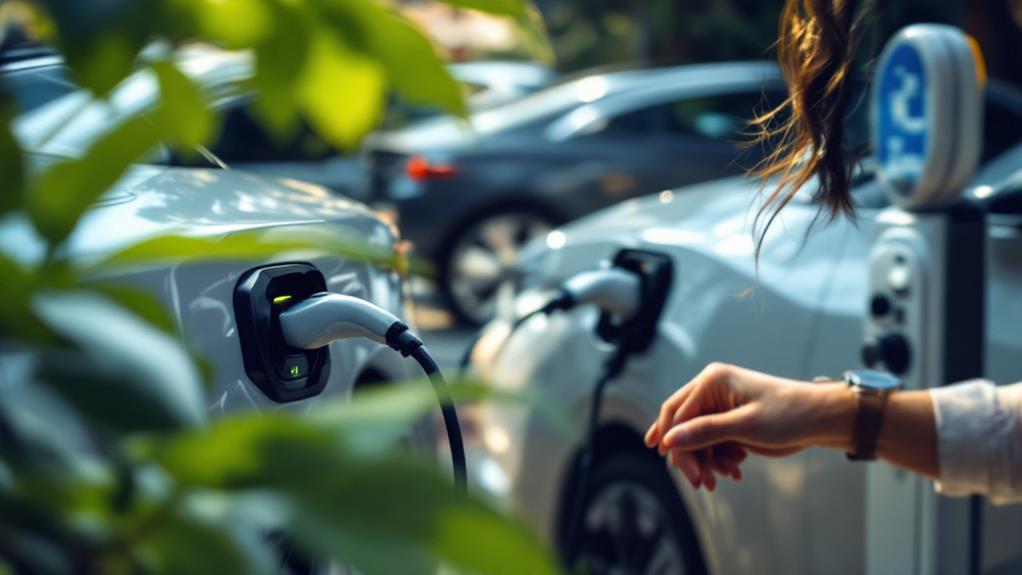
As electric vehicles become more prevalent, proper etiquette for shared charging spots is essential. When using public EV charging stations, respect time limits to guarantee fair access for all electric vehicle owners. Never unplug another EV, even if you suspect misuse. Instead, provide feedback through the charging network's app.
To maintain good etiquette, follow these guidelines:
- Park only in designated electric vehicle charging spots compatible with your EV
- Avoid occupying charging spots with gas or diesel-powered vehicles
- Communicate with other EV drivers by leaving a note if you need to step away
- Offer assistance to fellow EV owners when appropriate
- Adhere to emerging etiquette guidelines set by charging networks and local authorities
Managing Charging Time and Costs
Effectively managing charging time and costs is essential for EV owners who rely on street parking. As an electric car owner, you'll need to balance the convenience of public charging with its higher costs. While public stations can charge $0.25 to $0.50 per kWh, home charging is considerably cheaper at around $0.13 per kWh.
To optimize your charging strategy, consider using Level 2 charging whenever possible, as it delivers up to 19.2 kW compared to Level 1's 1.9 kW. This can dramatically reduce your charging times. Take advantage of free or discounted parking offered by many municipalities at public charging stations to offset costs. Additionally, look for businesses and organizations that provide free charging as a perk for customers.
For home charging, schedule your electric car to charge during off-peak hours to benefit from lower electricity rates. When on the go, plan your routes to include stops at DC fast charging stations like those operated by Electrify America. By combining these strategies, you can effectively manage your charging time and costs, making EV ownership more economical and convenient, even without dedicated home charging.
Advocating for Better Infrastructure
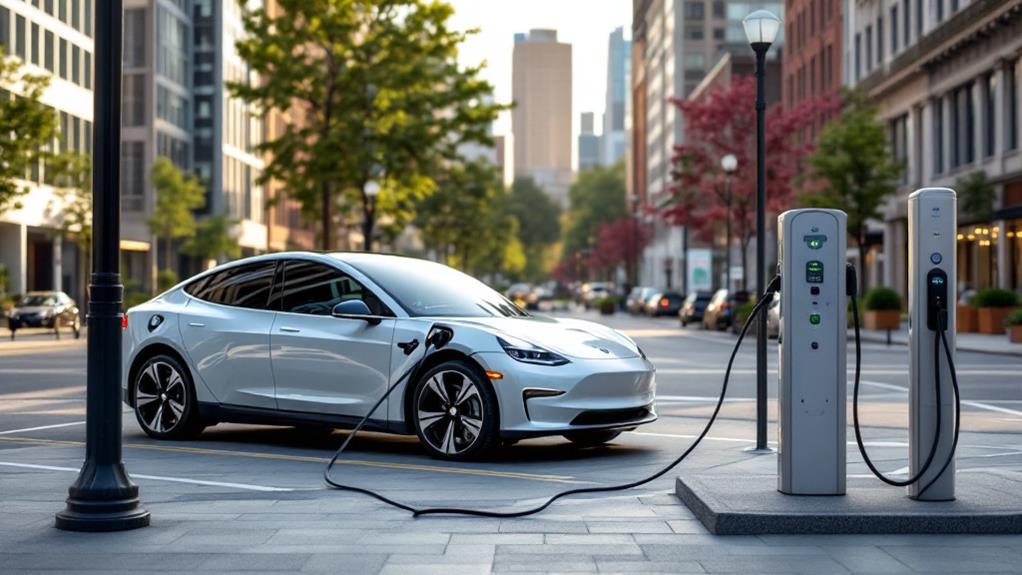
For EV owners who rely on street parking, advocating for better infrastructure is crucial to improving the charging experience. If you're driving an electric vehicle in cities like San Francisco, you'll need to know how to push for better charging options.
- Engage with local policymakers to support increased investment in public EV charging infrastructure
- Participate in community forums and work with advocacy groups to promote EV-friendly policies
- Organize with fellow EV owners to petition for dedicated on-street charging zones
- Use data on growing EV demand to make a persuasive case for expanding the public charging network
- Collaborate with private businesses to investigate shared charging hub opportunities
Keep in mind that your voice matters. By leveraging research and working with local businesses, you can help create a more substantial charging network. Emphasize the need for street-side level 2 chargers and DC fast charging stations in areas with limited off-street parking. Advocate for requiring new developments to include EV-ready parking spots. Remember, community engagement is a useful resource for finding solutions and driving change in your area's EV infrastructure.
